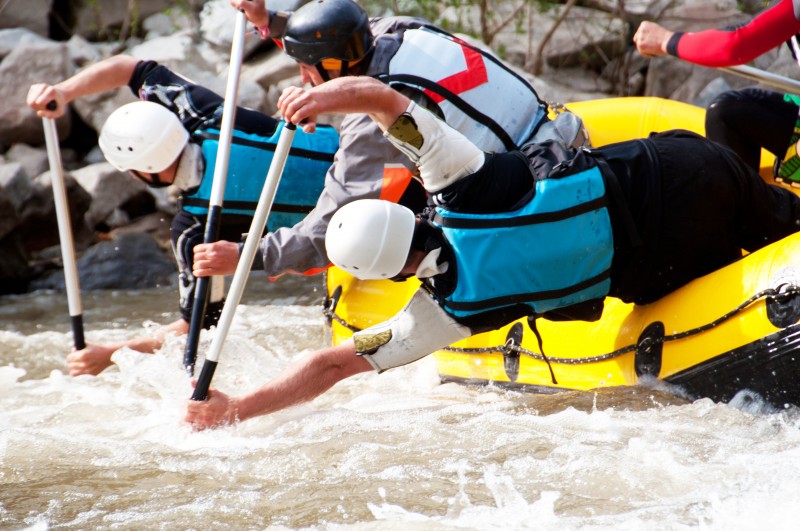
I’ve really been taking a lot of time recently to dive into the study of different types of leadership styles. Most of my free time is actually either spent with my wife and two sons (we have two dogs) or in professional/spiritual development. Through both, I have changed my world views on leadership. In a smaller view, I have also been able to sit back, reflect, and asses most of the flaws in the structural leadership that I believe plagues most of our industry. The root of the problem lies in a flawed model that was laid down as the blueprint. This model is the “Follow the Leader” “George Washington” model. This is where the leader of the organization is upfront, having all of the power and all of the answers, whereas the workers are behind, clueless and scampering to appease the leader in his or her all-powerful greatness. I believe this is truly ineffective not only for long-term success but also for the health of the staff. From my studies, I’ve found a more effective leadership style within the “whitewater rafting” or “servant leader” model. What that looks like is the leader provides the direction but works alongside his or her followers, following the standard that has been set (not his standard, THE standard). The difference between the two may not seem like much at face value, but it is monumental below the surface.
RECENT: The Process with Ryan Davis, Rodney Hill, Brian Johnson, and Dantonio Burnette
The George Washington model is an image we’re all familiar with: the men behind the leader, tirelessly paddling away, while our first president stands at the forefront of the boat, enshrined in glory and basking in superiority. Now for obvious reasons this style of leadership can be very harmful to any staff. Why? It glorifies one and objectifies the rest. This style of leadership gives rise to selfishness and “me” over team. Unknowingly (or on purpose), the leader is making himself the example of what perfection is. Success can be achieved only through the leader, who holds himself at the top of the pyramid. This leader is usually the one who finds self-security in power and control. By not allowing others to lead, his throne can never be usurped. By keeping others beaten down, they never have the strength to (in the leader’s mind) surpass him. By keeping the waters murky either from a lack of knowledge or a lack of communication, he prevents others from gaining stable footing.
Sometimes you fall into this trap, though, without even realizing it is happening. When you stop focusing on empowering leaders underneath you, when you stop communicating effectively, and when you start to use ego as a weapon, things will landslide. It’s very easy to fall into this trap or to think “I’m the leader; I need to lead out in front.” But the problem within that is that if you put yourself so far ahead of everyone else, when you look back, you no longer see those who started out right next to you. You separate from the pack, and separation eventually and coincidentally is segregation (superior over inferior). Meanwhile, your staff will start to feel contempt, confusion, and confliction: contempt with the lack of importance shown for their futures, confusion about the motives behind your decisions, and confliction with what the direction is or if there is even one anymore. Even strong-willed self-starters won’t go the extra mile for leaders they deem to be incompetent and inhumane. I say this from experience: I was working alongside my staff but eventually found myself far ahead on an island, wondering how I had gotten so far away from the men I was in the boat with. Mending these relationships took a lot of intentionality and time and still haunts me every single day.

Now, on the flip side, what does the whitewater rafting leadership model look like, and what makes it a far superior model? Before I can even start, I have to give credit where credit is due. Every Monday (on our usual day off), I go to the Olympic weight room to catch up and converse with my dear friend Jeff Ward (director of Olympic strength and conditioning). On those Mondays, we talk about life, love, lifting, spirituality, and leadership, and on occasion, we get a lift in. Through my observations of how he conducts his structure, and through our talks, I have learned about this model. With that being said, let’s break it down.
For those who are unfamiliar with whitewater rafting, the leader isn’t at the front of the boat. He’s positioned in the back with his oar. The ones doing the work are in front and alongside him. He gives the general direction (we need to get here), but he empowers those around him to get the job done as he works alongside them. Again, on the surface, George Washington is a man on a boat, and the whitewater rafting leader is a man on a boat, too. But the postural contrast between the two are night and day. The whitewater rafting leader is coming alongside his comrades and empowering them, turning them into leaders, which in all actuality is a leader creating leaders. The posture isn’t of, “Follow me, I got it all figured out in my egotistical bag of hidden treasures” but rather of true “servant leadership.” You lead, but you serve, and you serve, but you lead.
This takes a leader who is truly selfless, and it isn’t easy. It’s much harder to do right then to do wrong. I equate it with training a dog; it’s much easier to train a dog using fear and pain than it is to train with love. Love takes forgiveness and patience; there isn’t a lot of instant gratification in love. Love is a process that can push you to your brink at times. But with persistence, a dog that loves you is an unbelievable ally, whereas a dog that fears you is a very different type of animal. Your staff under a selfless leader is the dog that has been given love, guidance, empowerment, patience, grace, boundaries, challenges, and forgiveness. This isn’t to say that if mistakes happen, there aren’t repercussions for these mistakes. It’s saying that the posture in these talks, the place the corrections are coming from, is a place of love, not a place of ego: “Get this right or I’m going to fire you” versus “hey this is what you do well, this is what you need to work on, if these things don’t get changed, I want you here but if these things don’t change we will need to evaluate if you’re the best fit for what we are trying to do as a department.” There is a clear-cut standard, but everyone is working for the standard—not to appease the leader but because it is the standard. Everyone is accountable to the standard. The leader’s goal isn’t to be glorified and isn’t to judge those under him, as there isn’t anyone under him; they are alongside him.
RELATED: The Privilege to Work Hard
But some may say “then who leads, how can there be a place with no hierarchy?” There is a structure, but it’s not this: “I’m the director; your works should be aimed at pleasing me.” The posture should be: “I’m the director because there has to be a structural flow so that we all know our scopes.” It’s just a flow chart. The director is giving the bigger picture and the direction but is integrating himself/herself with those around them. It’s not a separation from but the integration of. This type of leader is seeking to empower and develop those around him or her to create future leaders who can take these new tools and use them to create more leaders.
I hope through clarification that the point is being made of what effective leadership looks like. It is devoid of ego, arrogance, and selfishness. Its cup runneth over with love, integrity, and selflessness. It’s an atmosphere of leaders coming alongside those around them and creating more leaders. I’m not perfect, in fact, far from. I have my own personal struggles and my own personal things I wrestle with. I can stand in front of you and say I was once a blind leader, thinking everything was coming from a place of love but the roots of my leadership were being watered with arrogance and pride. I would like to believe I had an amazing staff, we got along great, we enjoyed our time together, and we had fun but I unknowingly was robbing them of a true leader. In the best way I knew how I tried to empower, even sacrificing my own job security for them. But it was hallow because the roots were not being watered with purity. As I stated, this was my biggest flaw, but I have since equipped myself with the tools necessary to never allow this to happen again. I write this article in the hopes of giving eyes to those who right now are as blind as I was, and to soften the hearts of those who are stuck in their own cold glory. Your staff works tireless hours for you, time that they can’t give back to their families and loved ones. Do not forget this. Give them everything you have, love them in their strengths, and show grace in their weaknesses. Empower them, and walk alongside them. Do not segregate yourself from; integrate yourself with.
Image credit: Strahil Dimitrov © 123rf.com










